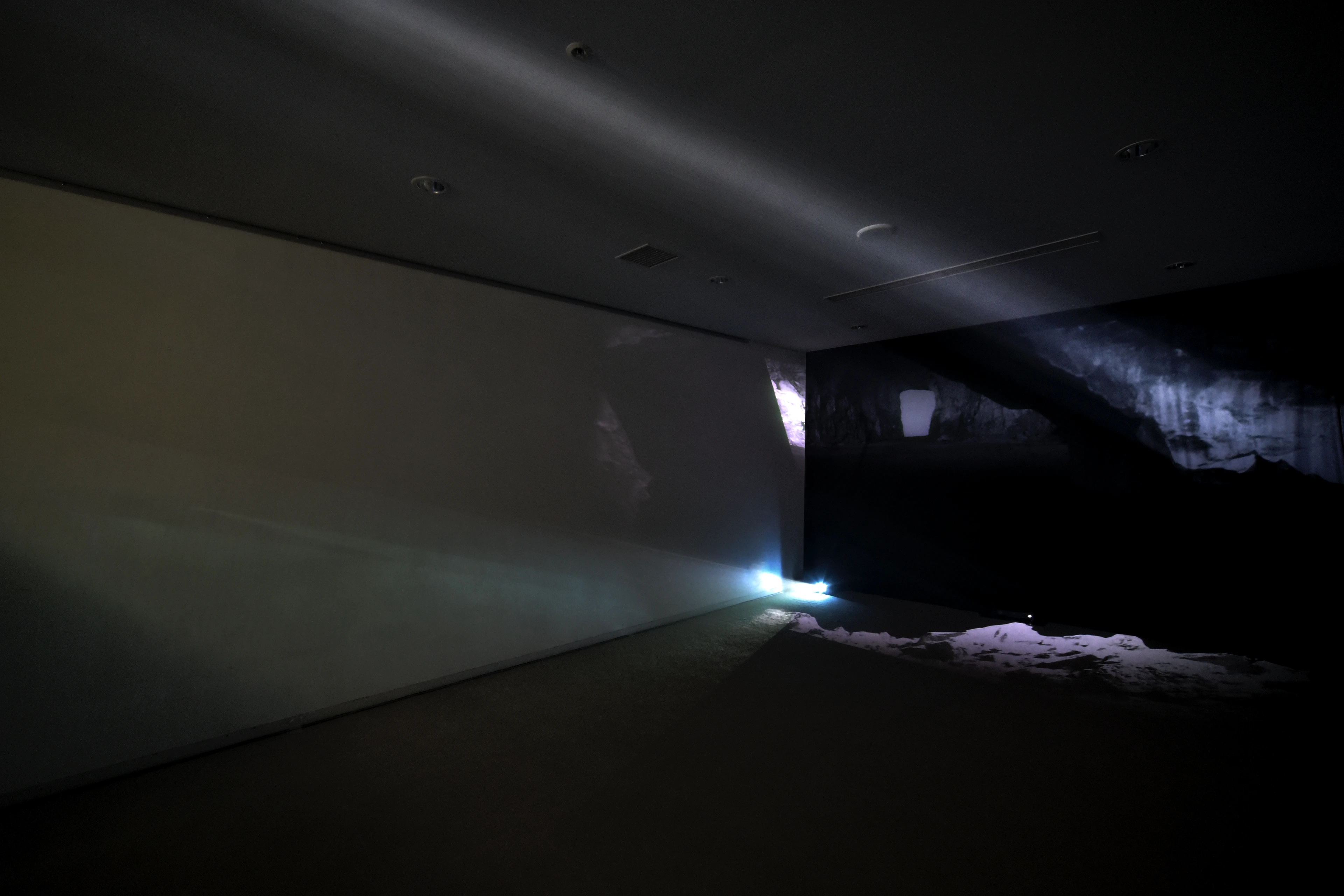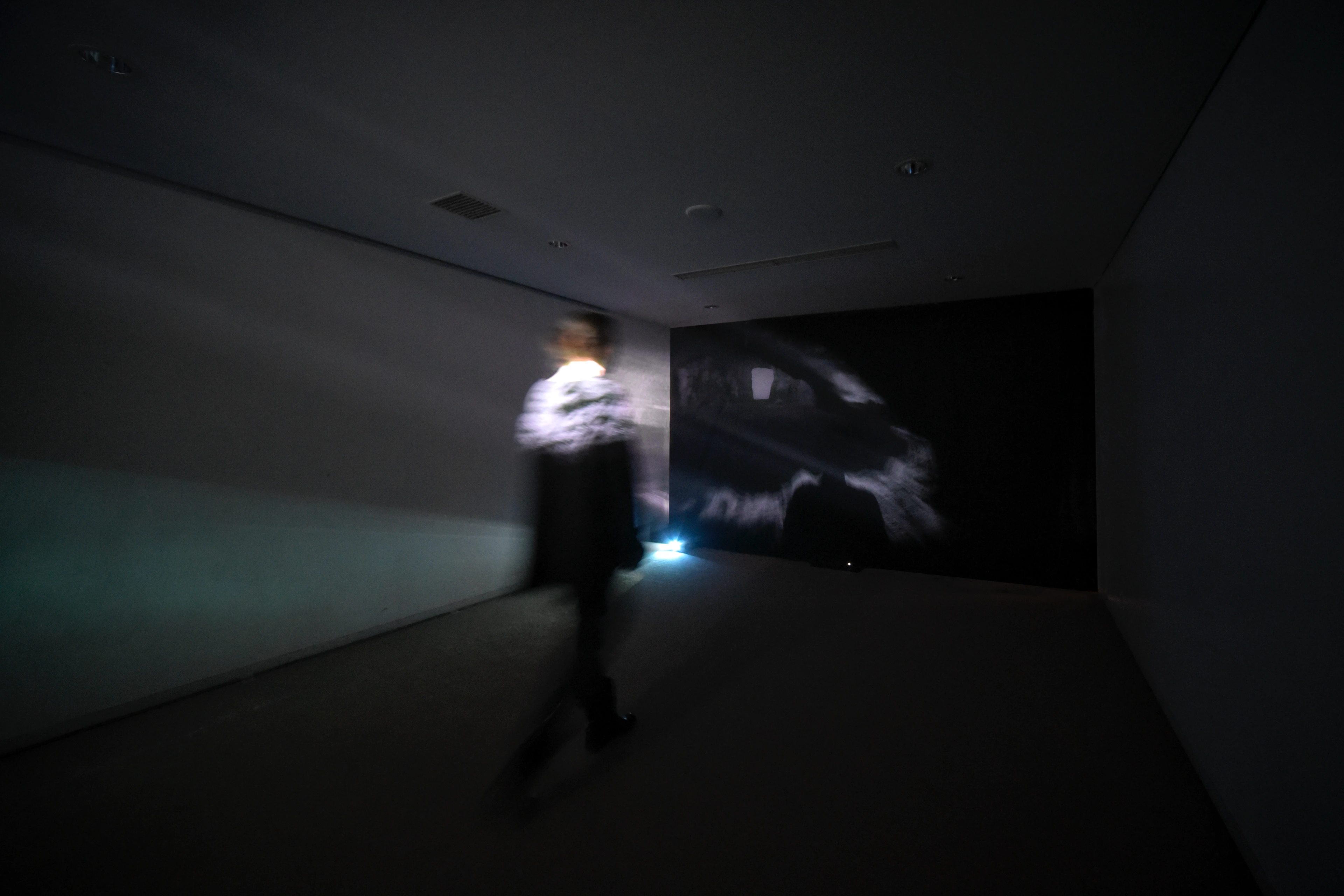Akiyoshi Sinella
An interactive video projection inspired by the Yamaguchi Cave—the longest limestone cave in Japan, measuring 11 kilometers—depicted an image of an unreachable path, with the cave passage shrinking as visitors tried to approach it, and expanding as they stepped back. The space was filled with fog, and the exit appeared to extend into the air, casting a beam of light that followed the visitor like a spotlight.
The installation was presented at The Future of This Land group exhibition, which addressed the depopulation of the Akiyoshi and Yamaguchi prefectures. Known for their limestone deposits, these areas are now facing the depletion of quarry resources, prompting critical conversations about the region’s future development.
The title references Sinella Akiyoshiana, a translucent organism endemic to the Akiyoshi Cave. As an endemic species, it can exclusively be found in a single, precisely defined geographic location (a species is designated as endemic only if it is not found anywhere else beyond the specified geographic boundaries).
Akiyoshi Sinella refers to the Japanese concept of MA, an in-between space that coexists with and challenges its surrounding framework. In contrast to Western thought, which is predicated on self-reference, Japanese culture values the concept of MA. Dutch philosopher Henk Oosterling illustrates this point with the example of an empty room: in Western culture, a room is considered empty until someone enters it, at which point a place centered on the person or object is produced. The moment another person enters the room, a relationship or interaction emerges between them, though this is viewed as secondary to identity. By contrast, the Japanese concept of MA regards the in-between space as more important, as it is where life is lived and movement from one place to another is organized. According to architect Arata Isozaki, the in-between space is key to sensing the moment of movement.
Interactive installation
Interactive projection, fog
Akiyoshidai International Art Village, Yamaguchi, Japan, 2018
References:
Henk Oosterling, A Culture of the ‘Inter’, Japanese Notions ma and basho
Akiyoshi Sinella
Interactive installation
Interactive projection, fog
Akiyoshidai International Art Village, Yamaguchi, Japan, 2018
An interactive video projection inspired by the Yamaguchi Cave—the longest limestone cave in Japan, measuring 11 kilometers—depicted an image of an unreachable path, with the cave passage shrinking as visitors tried to approach it, and expanding as they stepped back. The space was filled with fog, and the exit appeared to extend into the air, casting a beam of light that followed the visitor like a spotlight.
The installation was presented at The Future of This Land group exhibition, which addressed the depopulation of the Akiyoshi and Yamaguchi prefectures. Known for their limestone deposits, these areas are now facing the depletion of quarry resources, prompting critical conversations about the region’s future development.
The title references Sinella Akiyoshiana, a translucent organism endemic to the Akiyoshi Cave. As an endemic species, it can exclusively be found in a single, precisely defined geographic location (a species is designated as endemic only if it is not found anywhere else beyond the specified geographic boundaries).
Akiyoshi Sinella refers to the Japanese concept of MA, an in-between space that coexists with and challenges its surrounding framework. In contrast to Western thought, which is predicated on self-reference, Japanese culture values the concept of MA. Dutch philosopher Henk Oosterling illustrates this point with the example of an empty room: in Western culture, a room is considered empty until someone enters it, at which point a place centered on the person or object is produced. The moment another person enters the room, a relationship or interaction emerges between them, though this is viewed as secondary to identity. By contrast, the Japanese concept of MA regards the in-between space as more important, as it is where life is lived and movement from one place to another is organized. According to architect Arata Isozaki, the in-between space is key to sensing the moment of movement.
References:
Henk Oosterling, A Culture of the ‘Inter’, Japanese Notions ma and basho



